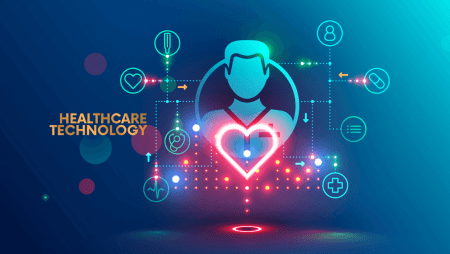



Get new exclusive access to healthcare business reports & breaking news




Healthcare is a complex and challenging industry that affects everyone around the globe. While we must acknowledge that the system is complicated, especially in the US, that doesn’t mean we shouldn’t try to simplify and streamline it as much as possible.
In the United States, healthcare produces a great deal of waste. Time, money, and resources are wasted every day at healthcare organizations, driving up costs and affecting the health and well-being of patients who are just trying to get better. We need to do better than that.
Simplifying healthcare is a huge project. But with the new technology tools and data sources available within the industry, it is possible. Here are some of the biggest challenges and opportunities involved in meeting this ambitious goal.
Because the United States healthcare system is so complex, it can be very confusing for the average American trying to get the care they need. It’s a system that encompasses private businesses, government organizations, community health services, clinical care delivery systems, and more. In addition to the different direct healthcare organizations, there are various health insurance organizations that further complicate care systems.
Most people find out where they can get their care through their health insurance: they choose a doctor that accepts their plan. Proximity is also a driving factor.
Many people will choose the doctor or hospital that is most conveniently located for them. Those without insurance may choose community healthcare options or the closest hospital for treatment. People who need specialized care may travel long distances for their care and may have multiple providers across different organizations.
Patients who have insurance won’t typically pay up front for their care unless there is a co-pay or they haven’t met their insurance deductible. Generally, an insurance company will negotiate with doctors on the cost of services. There are so many factors that go into how much patients will end up paying for their care, and many are unaware of the actual cost until they finally receive a bill.
The system often puts the onus on patients to understand their options for care and health insurance based on factors like their age, employment, region, and more. Providers often don’t interact with one another to coordinate patient care, compromising outcomes. Additionally, this complex network of providers often means that larger public health goals are more difficult to reach.
Over the last few decades, American healthcare organizations have made the switch over to electronic health records (EHR) to make it easier to store, access, and share patient records. While this move has been very positive in many ways, it has also ushered in a new wave of cybercrime and created new cybersecurity vulnerabilities.
Health organizations have a legal obligation to protect identifiable patient information, for privacy reasons. Therefore, the sharing of data has very strict limits and it’s not always clear what is or isn’t acceptable under the law.
Sharing data more freely and easily could revolutionize the healthcare industry. This is what’s known as interoperability—access and integration of data so that it can be used to improve health for individual patients and larger communities.
Although sharing should be easy in theory, there are several challenges that come up. First, the privacy concerns. Understandably, organizations are very cautious about sharing data, in order to remain HIPAA compliant and to protect patients’ sensitive health information. Most people who have fallen victim to a healthcare data breach know just how upsetting it is to have your personal information stolen or exposed.
The other issue is more practical. Although EHR have become standard, there is no standard for interoperability within the healthcare industry. Quite simply, different organizations use different systems for record-keeping, which are often incompatible with one another.
Data fields, fonts, and many other differences between systems can make it impossible to directly share and integrate patient data. This can cause a lot of friction and delays in sharing crucial data, which could be extremely time-sensitive. The information often needs to be re-formatted before it is shared, increasing complexity, frustration, and costs.
The healthcare system is already complex enough without information blocking and non-compatible systems for storing records. Moving to EHR was a huge step for the system, but it is not enough without interoperability. Without standardization, EHR can be almost as inefficient as paper records.
Sometimes, sharing information can mean the difference between life and death. Medical errors are all too common, and frictionless sharing of patient information between providers could reduce these errors and improve patient outcomes or even save lives. Mismatched records are common and create serious problems.
Additionally, increasing data sharing within the industry could help to improve public health, especially during another large-scale health crisis like the COVID-19 pandemic. Being able to access data in a standardized format backed by clear policies would allow for quicker identification of public health trends. This would improve health leaders’ ability to strategize and mobilize resources to help communities.
For too long, healthcare has been focused on treating immediate health problems. While this is obviously important, putting an emphasis on preventative care would better serve patients in the long run. Better interoperability of health data will be necessary for reaching that goal. Health data can provide information on potential risks for individual patients, allowing for better preventative, personalized strategies.
Because the US healthcare system is so fragmented, creating unified systems is extremely difficult, especially when you take into account just how many organizations would be involved. However, the hard work of creating new systems would pay off by improving care and reducing waste within the industry. The longer we go on in the current system, the harder it will be to change in the future.
One of the reasons achieving interoperability has been a challenge to this point is that there is currently no unified way to identify patients. They may be identified using several different methods, causing confusion and difficulty in sharing records. If the industry begins to think in systems, it could create a unified identification system that would ensure patients are properly identified on their records.
Technology can also help to simplify healthcare and process the massive amounts of data being produced every single day. Most of the data that has been collected is of low quality and can actually make it more difficult to find crucial patient data that could save someone’s life. By using tools like blockchain technology and machine learning, some of these problems could be alleviated.
Most people want their private health data shared between their doctors for convenience, safety, and care coordination. They don’t want to go through the hassle of waiting for healthcare providers to sort through different records and re-format them so they can be shared. That’s not a good use of time for anyone and it can lead to problems like medical errors.
On the other hand, the healthcare industry is plagued by cybercrime, and data breaches exposing patient records are shockingly common. How can the industry begin to go through the tedious process of standardizing health data systems when the threat of theft is so high?
There are no easy answers. Even the most scrupulous organization may experience a data breach. But that is no excuse for the industry continuing to create clunky systems that make it more difficult for patients to get the care they need.
We have an opportunity to build a better healthcare system in the United States with interoperability. A simplified system would allow healthcare professionals to focus on providing outstanding patient care, rather than collecting different patient records and dealing with data-related obstacles. Administrators would be able to focus on other, more important tasks than data entry.
Patients would benefit from timely and informed care. They wouldn’t have to worry about mentioning all their past health information in case that could affect their safety or treatment plan. Not only that, but reducing friction in data sharing would likely affect healthcare costs for the better, as it would make the system as a whole more efficient.
This isn’t an overnight solution. Policies need to catch up with technology since it would be very difficult to get compliance from every healthcare provider without a change in healthcare data laws. We have seen this work before—HIPAA and EHR mandate brought about huge, revolutionary changes in the industry. Now, it’s time to take the next step.
There are many challenges in healthcare, but simplifying patient records and streamlining the sharing process is something everyone would love to see. For patients, the struggle over records often happens behind the scenes. But the impacts reach far beyond a little extra inconvenience. Interoperability could lead the US health system into a better future for all and make a complex system a lot easier to handle.